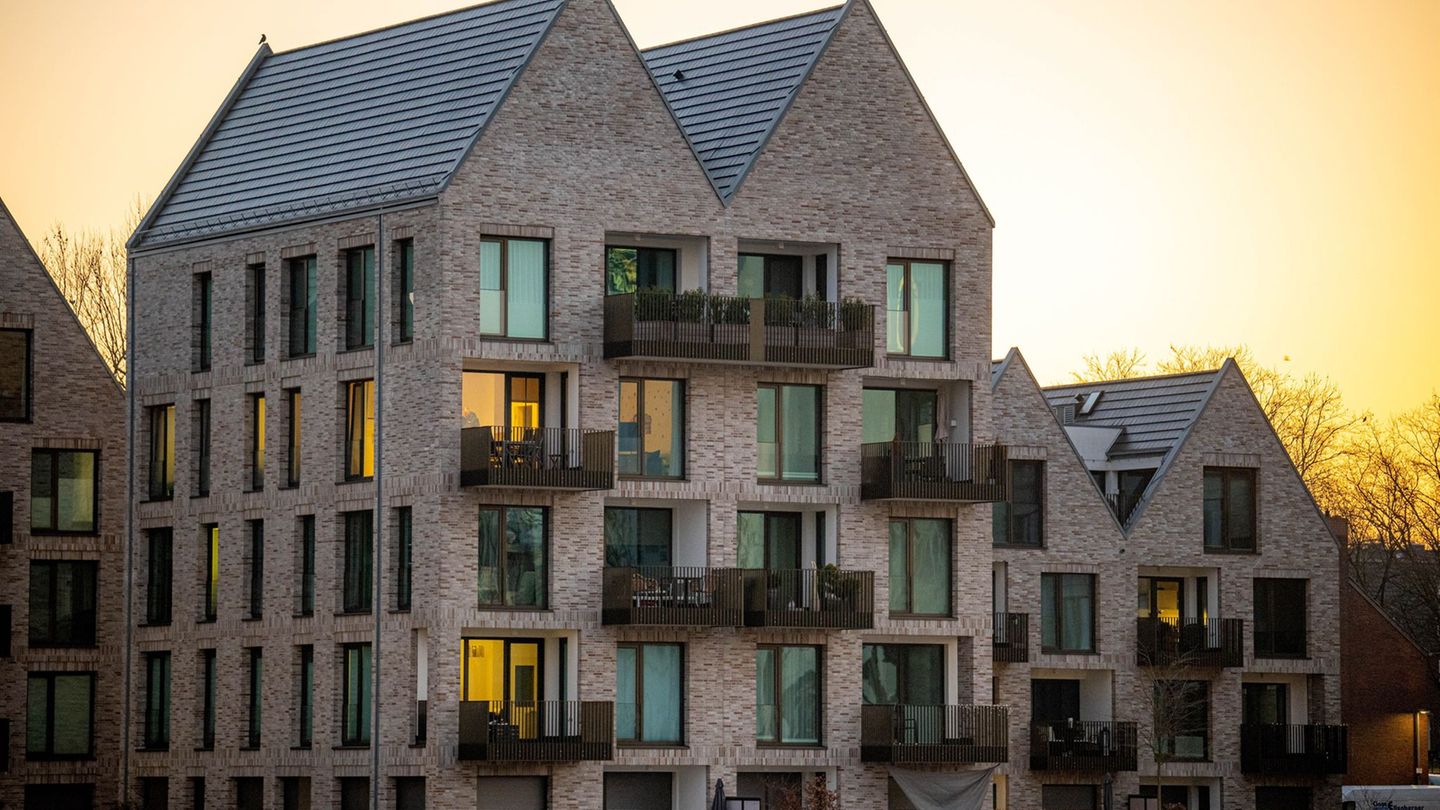property
Large construction site housing: 320,000 apartments are necessary annually
Copy the current link
Add to the memorial list
The traffic light government wanted to build 400,000 apartments a year, and it has become significantly less. According to a current forecast, the need for apartments is immense – and regionally very different.
High needs, but too few apartments: According to a forecast, around 320,000 new apartments will be required annually by 2030. However, the demand is distributed very differently regionally, according to an analysis by the Federal Institute for Building, Urban and Spatial Research (BBSR) on behalf of the Federal Ministry of Building. The experts have a lower need than many associations and institutes.
Ampel government failed to do so
In its coalition agreement, the traffic light government had made 400,000 apartments built annually, but failed to do so. According to the BBSR, around 294,400 apartments were completed in 2023, almost 90 percent of which were made in newly built buildings.
According to its own statements, the Federal Ministry of Building did not have its own needs analysis for a long time and commissioned the BBSR forecast in view of the market. “With the help of the independent forecast of the new housing hardship, the Federal Government finally has the opportunity to further increase the accuracy of its housing policy,” said a spokesman for Federal Minister of Building Klara Geywitz (SPD).
The forecast of the BBSR refers to the period 2023 to 2030. Among other things, population development and construction activity were included.
Lack of living in the metropolises, vacancy in the country
According to the new analysis, the living space requirement is far apart regionally. Especially in metropolitan areas, demand remains high – and where there are bottlenecks, buy prices and rents usually increase. According to the forecast, 60,000 new apartments are in the seven largest German cities of Berlin, Munich, Hamburg, Frankfurt, Stuttgart, Cologne and Düsseldorf alone. At the same time, the demand for apartments and vacancies are sinking in peripheral and shrinking regions.
The south grows, the east shrinks
According to the information, the highest need is available in the south: the city of Landshut is at the front (87 apartments every 10,000 inhabitants per year), followed by the districts of Regensburg (83), Kempten in the Allgäu (77) and Memmingen (75). The nationwide average of needs is 10,000 inhabitants per year for 38 apartments.
In the east of Germany, the number of households is stagnating or decreasing with the exception of Berlin and the Berlin area – analogous to the development of the population. The lowest need is available in the district of Weimarer Land with five apartments each 10,000 inhabitants and in the districts of Altmarkkreis Salzwedel, Börde, Saale-Holzlandkreis and Saalekreis (6 each).
Why the housing stalls
Housing in Germany is, among other things, in the face of high construction costs and increased interest rates in the crisis. At the same time, specialists in the construction industry are missing. “Since the beginning of the Russian attack war against Ukraine and the turning point, the building permits have decreased significantly,” said Matthias Waltersbacher from the BBSR. That was shown in the numbers.
Other facilities see the living space requirements higher. For example, the Institute of German Economy (IW) calculated an annual new building requirement of 373,000 apartments. According to Ralph Henger, economist for housing policy and real estate economics at the IW, housing policy, led by Minister of Construction Geywitz, has rightly focused on more new construction and initiated many correct measures. However, these were “counteracted in troubled times by massively increased interest rates and construction costs as well as the shortage of skilled workers”.
More and more people live in small households
The housing crisis had been fought too little since 2022, said Henger. He sees responsibility not only the federal government, but also the federal states as well as cities and municipalities in rapidly growing regions.
“Despite long -term stagnating population, the number of households will increase,” said Waltersbacher from the BBSR. This is mainly due to the “persistent trend of singularization” and aging. In the future, there will be more smaller households as a result.
Almost two million apartments are empty
In order to breastfeed the high demand for living space in Germany, new buildings would have to be created in growth -strong cities and in the surrounding area. In counties with a falling population, the stock should be developed above all instead of creating future vacancy. According to the Federal Statistical Office, almost two million apartments in Germany were empty in 2022.
dpa
Source: Stern




